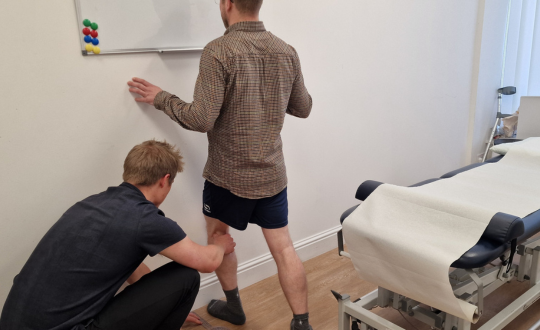
Biomechanical analysis by a physiotherapist involves evaluating the body's movement patterns, posture, and mechanics to identify inefficiencies or abnormalities that may cause pain, injury, or limit performance. Using techniques like video analysis, gait assessment, or functional movement screening, physiotherapists can pinpoint specific issues such as joint misalignment, muscle imbalances, or improper movement techniques. This information guides the development of a tailored treatment plan to correct faulty mechanics, improve efficiency, and reduce the risk of injury.
Biomechanical analysis is particularly useful for athletes, individuals recovering from injury, or those with chronic pain to enhance performance, facilitate recovery, and ensure optimal movement patterns.
Examples of biomechanical analysis
-
Gait Analysis (Walking and Running)
-
Posture Assessment
-
Foot and Ankle Biomechanics (e.g. pronation/supination)
-
Functional Movement Screening (e.g. squats, lunges)
-
Shoulder Mechanics Assessment (e.g. overhead movements)
-
Sport-Specific Movement Analysis (e.g. golf swing, tennis stroke)
-
Hip and Pelvic Alignment Evaluation
-
Core Stability and Trunk Control Assessment
-
Jump and Landing Mechanics Analysis
-
Ergonomic Assessment (Workplace or Activity-Specific)
-
Joint Range of Motion and Flexibility Assessment
-
Balance and Proprioception Testing
